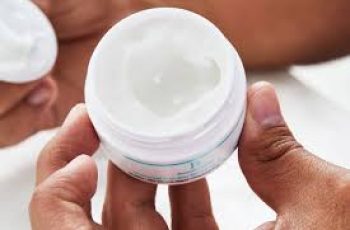
9 Proven Ways to Hydrate Your Skin in Winter
Winter is a beautiful season, but it’s not always kind to your skin. As temperatures drop and the air becomes dry, skin hydration becomes more challenging than ever.
Biting winds, icy conditions, and freezing temperatures can strip your skin of its natural moisture. Unfortunately, staying indoors doesn’t solve the issue either.
Central heating systems tend to dry out the air inside your home. This low humidity environment steals moisture from your skin just as fast as the cold air outside.
Dry skin is more than just a cosmetic concern. It can feel tight, rough, itchy, and even crack or bleed if neglected. That’s why winter skin care is essential.
But don’t worry—while the struggle is real, dry skin is not inevitable. With the right steps, you can keep your skin soft, smooth, and glowing all winter long.
Here are 9 practical, dermatologist-approved ways to hydrate your skin this winter and beat the seasonal skin blues.
1. Drink More Water—Even If You Don’t Feel Thirsty
Staying hydrated starts from within. But in winter, we often forget to drink water because we don’t feel as thirsty as we do in summer.
Instead, we reach for warming drinks like coffee, tea, and hot chocolate. These are comforting but often contain caffeine, which can dehydrate you.
To stay hydrated, aim to drink at least 6–8 glasses of water a day. If cold water sounds uninviting, try sipping warm water with lemon.
This combo is both hydrating and great for your digestion. Add a spoonful of honey for a natural immune boost and soothing relief from winter sniffles.
Even herbal teas like chamomile, peppermint, or rooibos can support hydration without the dehydrating effects of caffeine.
The more hydrated your body is, the better your skin can retain moisture and maintain its protective barrier.
2. Don’t Skip the Exfoliation—Even in Winter
Exfoliation often gets associated with summer beauty routines. But your skin needs gentle exfoliation in winter just as much—maybe even more.
Cold air and indoor heating can create a buildup of dead skin cells. This layer makes it harder for moisturisers to penetrate and hydrate your skin properly.
Exfoliating once or twice a week helps remove this barrier. It also encourages cell turnover and leaves your skin smoother and more receptive to products.
Look for a gentle exfoliator with hydrating ingredients like hyaluronic acid or lactic acid. Avoid harsh scrubs that can damage or irritate dry skin.
Even body washes with mild exfoliating beads can be a good option for daily use. Just be sure to follow up with a rich moisturiser afterward.
3. Use Lukewarm Water—Not Hot
After being out in the cold, nothing feels better than a steaming hot shower or bath. But unfortunately, very hot water strips your skin of its natural oils.
These oils help keep your skin soft, hydrated, and protected. Without them, your skin becomes dry, itchy, and more prone to cracking.
Try using lukewarm water instead of hot when bathing or washing your face and hands. It’s gentler on your skin and helps preserve moisture levels.
After your bath or shower, pat your skin dry instead of rubbing it. Immediately follow with a moisturiser to lock in hydration.
4. Choose the Right Products for Your Skin Type
Not all skincare products are created equal, especially during winter. Choosing products with the right ingredients can make a huge difference.
Avoid moisturisers with alcohol, artificial fragrances, or sulfates. These can further dry out or irritate your already sensitive winter skin.
Instead, look for nourishing ingredients like shea butter, ceramides, hyaluronic acid, and squalane. These help your skin retain and attract moisture.
Oil-based creams are especially helpful in winter. They create a protective barrier on your skin and prevent water loss more effectively than water-based ones.
You might also consider adding a hydrating serum or sheet mask to your routine. These offer concentrated moisture and are ideal for a quick skin refresh.
5. Moisturise Daily—and Apply It While Skin Is Still Damp
The best time to apply moisturiser is immediately after your shower or bath. Damp skin absorbs products better and helps lock in hydration more effectively.
Pat your skin lightly with a towel and apply a rich cream or body butter within three minutes. This helps trap the water in your skin before it evaporates.
Keep a bottle of moisturiser near your sink, too. Washing your hands frequently during flu season can dry them out quickly. Moisturising right after helps.
Reapply throughout the day, especially on high-risk areas like hands, face, elbows, and knees. These zones are more prone to dryness and cracking.
6. Don’t Forget Sun Protection—Yes, Even in Winter
It’s a common myth that sunscreen is only needed in summer. In reality, harmful UV rays are present all year round—even on cloudy winter days.
Snow and ice can reflect sunlight, increasing your exposure to UV rays and raising your risk of skin damage and dryness.
Choose a broad-spectrum sunscreen with SPF 30 or higher and apply it daily to your face, neck, and any other exposed skin.
You can also use a moisturiser with built-in SPF if you prefer a simplified routine. Consistent use protects your skin and slows signs of aging.
7. Overnight Moisturising Can Work Wonders
Nighttime is when your skin enters repair mode, making it the perfect time to apply rich moisturising products.
Target commonly dry areas like your hands, feet, elbows, and knees with thicker creams or ointments. These areas have thinner skin and lose moisture faster.
For extra softness, wear cotton gloves or socks after applying your favourite thick moisturiser before bed. You’ll wake up with smoother, more hydrated skin.
Consider using a humidifier in your bedroom as well. It restores moisture to the air and keeps your skin hydrated while you sleep.
8. Hydrate Your Skin from the Inside Out
Hydration isn’t just about what you apply—it’s also about what you eat. Your diet can support your skin’s health in a big way.
Foods rich in omega-3 fatty acids, like salmon, walnuts, and flaxseeds, help maintain your skin’s lipid barrier and keep it supple.
Add more hydrating fruits and vegetables to your meals, such as cucumber, watermelon, celery, and oranges. These are high in water and skin-friendly nutrients.
Avocados are another winter skin hero. They’re packed with healthy fats, vitamin E, and antioxidants that help nourish your skin from within.
Drinking bone broth or herbal teas can also support hydration and provide skin-repairing nutrients like collagen and amino acids.
9. Try DIY Face Masks for an Extra Boost
Homemade face masks are a great way to hydrate your skin using simple, natural ingredients from your kitchen. They’re fun, effective, and customizable.
You can create masks using hydrating ingredients like honey, yogurt, mashed banana, avocado, aloe vera, or even oats.
Apply your chosen blend to clean skin and leave it on for 10 to 30 minutes. Then rinse off gently and follow with your usual moisturiser.
These DIY treatments are perfect once or twice a week, especially when your skin feels extra dry or irritated. Just be sure to patch test if you have sensitive skin.
Final Thoughts: Keep Your Skin Happy All Winter Long
Taking care of your skin during winter doesn’t have to be complicated. With a little extra effort and consistency, you can keep your skin looking and feeling its best.
Whether it’s drinking more water, swapping out your moisturiser, or trying a nourishing overnight treatment, every step helps.
Try incorporating these nine winter hydration tips into your daily routine. Your skin will thank you—and come spring, you’ll still be glowing.


